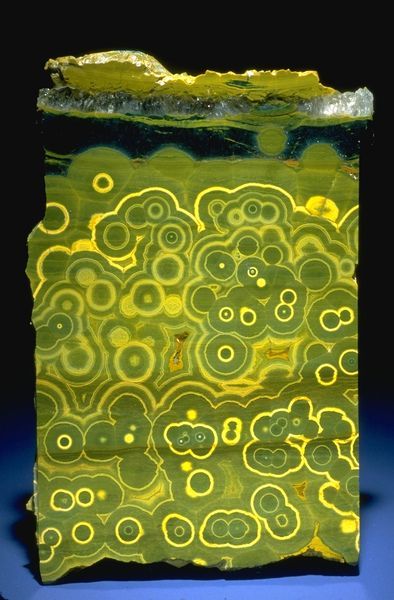Oxidised and reducedThe concept known as redox has a fundamental part to play in chemistry, includin
Oxidised and reducedThe concept known as redox has a fundamental part to play in chemistry, including its specialised ramifications of geochemistry and mineralogy. It essentially signals the propensity of an element or compound to give or take electrons, related to whether it has a surplus of them or a lack of them in the outer shell surrounding the atomic nucleus. While this affects the properties of minerals on many levels one of the most obvious ones is colour, since some elements exist in nature in either form, depending on their geological history. Iron is an excellent example, thriving in both 2++ (ie it lacks two negatively charged electrons in its outer shell and has a net charge therefore of +2, meaning that to form a chemical bond it needs to accept 2 electrons from the other unit) and 3+++ versions. The most common electron donor in these cases is oxygen (double -).The most obvious place you see this in practice is with amethyst (purple quartz) and citrine (yellow to orange brown quartz). Both are coloured by iron (2+ and 3+ respectively), but their different valencies (as this property related to electron spares or gaps in the outer shell is called) absorb light differently, resulting in different hues. The same is common in sandstones, with deep marine ones usually being coloured green by reduced oxygen poor sands and land deposited desert red or yellow beds that have been oxidised by air and rain shining an obvious yellow brown or crimson.The agate slab in the picture (drawn from the Smithsonian museum collection) exhibits this property very well, with the bulk being made up of reduced green mud incorporated into the silica. As some of the layers were precipitated from the ichor they were in contact with oxygen, forming the bright yellow rings that contain the oxidised iron minerals limonite and goethite. The available electrons were swiftly soaked up though, leading the bulk of the slab to exhibit the characteristic green hue of reduced iron. So there you have it, a lushly patterned slab of rock, and all due to the state of being of the iron within.#mineralmondayLozImage credit: Chip Clarkhttps://geogallery.si.edu/10026075/orbicular-agate -- source link
Tumblr Blog : the-earth-story.com
#redox#chemistry#science#geology#agate#mineralogy#yellow#limonite#goethite#electron#mineralmonday#smithsonian
